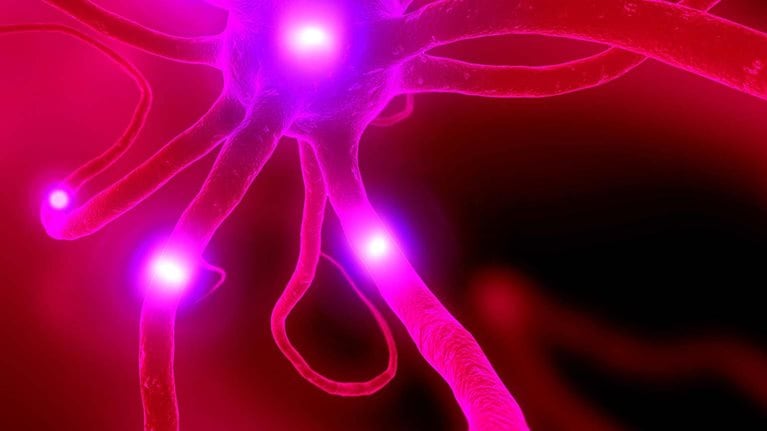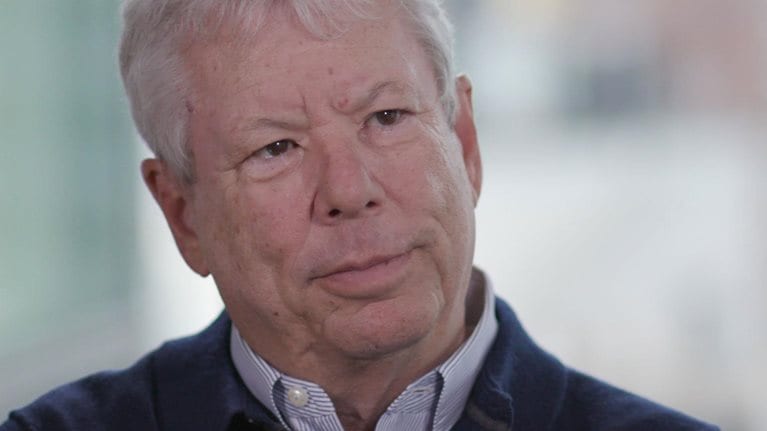The management of risk in financial services is about to be transformed. A recent McKinsey paper identified six structural trends that will reshape the function in the next decade. Five are familiar—they concern regulation, costs, customer expectations, analytics, and digitization—but one is less so: debiasing. That means using insights from psychology and behavioral economics, combined with advanced analytical methods, to take the bias out of risk decisions. The institutions pioneering this approach have seen tremendous benefits: for instance, banks adopting psychological interventions in consumer collections have achieved a 20 to 30 percent increase in the amount collected.1
Stay current on your favorite topics
The interest in debiasing is growing as psychological research uncovers more and more subconscious effects that influence our decision making. Meanwhile, an explosion in data availability is providing businesses with an abundant flow of information for their analytic engines. Not all the data theoretically available can be exploited, for legal and privacy as well as technical reasons. But institutions still have a massive amount of underused data that they can mine, using an increasingly sophisticated array of advanced analytics techniques, to develop behavioral segmentations and predictive models. With these foundations in place, they can go on to design powerful interventions to tackle bias.
Take the example of a bank using a recursive neural network to extract customer profiles from credit-card transaction data. One profile that emerges is of a cardholder who clocks up dozens of low-value transactions at a convenience store every week. The customer’s habit of making multiple repeat visits at odd hours—seemingly for only one or two items at a time—suggests a lack of forward planning. Seen through a psychometric lens, the customer seems to be exhibiting poor impulse control and a lack of conscientiousness, traits that are likely to determine which types of decision bias this customer can be expected to manifest.
Compare this profile with that of a cardholder who completes one big supermarket transaction at more or less the same time every Friday evening, with little or no evidence of convenience-store shopping in between. That profile is indicative of a well-organized person who plans ahead. It’s likely that the first customer would benefit from financial products designed to help customers who struggle to meet their financial obligations—such as a credit card with weekly rather than monthly payment installments—whereas the second customer would probably have no need of them. And if, say, the bank is considering ways to motivate cardholders to pay off delinquent credit, its knowledge that customers with the first cardholder’s profile are likely to prioritize immediate consumption over clearing their debts will help it design suitable incentives to counter this tendency.
Analytics-driven psychological insights like these can be a spur to tremendous value creation. This article considers some of the most common biases in business decision making and looks in detail at three areas where debiasing can reap rich rewards: credit underwriting, consumer debt collection, and asset management.
Uncovering biases in business
Biases are predispositions of a psychological, sociological, or even physiological nature that can influence our decision making (see sidebar, “A quick guide to common biases”). They often operate subconsciously, outside the logical processes that we like to believe govern our decisions. They are frequently regarded as flaws, but this is both wrong and unfortunate. It’s wrong because biases are an inevitable side effect of the mechanics our brains need to achieve their astonishing speed and efficiency in making tens of thousands of decisions a day. And it’s unfortunate because the negative perception of biases leads us to believe we are immune to them—a bias in itself, known as overconfidence, exhibited by the 93 percent of US drivers who believe themselves to be among the nation’s top 50 percent.
Even if we accept that biases may influence our decisions, we might assume that successful organizations have developed processes to keep them in check. But experience indicates otherwise. For example, academic research has found that ego depletion materially affects the work of judges, doctors, and crime investigators, and our own research has revealed how it affects credit officers’ decisions, manifesting itself in tangible business metrics such as credit approval rates. When financial institutions work to counter bias in judgmental underwriting—in small business credit, for example—they can typically cut credit losses by at least 25 percent, and even as much as 57 percent in one case.
For lenders, an area particularly ripe for debiasing is debt collections, where biases can shape the behavior of collectors and customers alike. Consider how collectors handle calls with recalcitrant customers. Over the course of a call, they need to make numerous split-second decisions that expose them to the full gamut of biases, such as anchoring and over-optimism, as well as somatic effects and ego depletion. Whether they persist in trying to elicit a promise to pay or give up and move on to the next delinquent account may partly depend on the time of day. The effectiveness of collectors’ calls dwindles over the course of the working day as ego depletion sets in (Exhibit 1). The good news is that companies aware of this phenomenon can make adjustments in collectors’ working environment to help counter it.

And when it comes to customers with overdue accounts, leading financial institutions are harnessing a plethora of psychological insights to encourage payment. This often means making targeted interventions that increase customers’ motivation to pay, help those with low self-control to keep their commitments, and respect individuals’ need for agency (and thereby avoid triggering what psychologists call “reactance”). A credit-card provider could, for instance, present high-risk customers with a late-fee waiver or a gift card from a favorite shop that they would lose if they didn’t make a payment. Framing the offer as a loss for a payment missed, rather than a reward for a payment made, enlists the help of the loss aversion bias and can double the effectiveness of the offer.
Before deciding where and how to use behavioral levers, financial institutions need to consider a range of factors (see sidebar, “How can financial institutions tackle biases?”).
To give a sense of what can be achieved when these techniques are applied in practice, let’s now examine what leading institutions have been doing to take bias out of credit underwriting and consumer debt collection. And looking beyond lending, the sidebar “Debiasing asset management” describes how firms in an adjacent industry uncovered bias in their investment decisions.
Commercial credit underwriting
Most credit officers possess a strong professional ethic and have honed their skills over years, if not decades. Yet evidence indicates they are just as susceptible as anyone else to decision bias.
One bank with poor performance in its commercial credit underwriting made a retrospective assessment of the predictive value of its judgmental credit ratings using Gini coefficient measures on a scale from 0 (no predictive power) to 100 (perfect prediction). The analysis examined 20 dimensions stipulated by the bank’s credit policy, such as management quality and account conduct, and compared judgments made by credit officers with actual defaults observed over the following 12 months. One dimension (account conduct) stood out with a relatively high Gini of 45, but most dimensions had much lower scores (Exhibit 2). By way of comparison, comprehensive best-practice models for rating small businesses can achieve a Gini of 60–75.

In fact, half of the dimensions in the bank’s rating model achieved a Gini score of 7 or lower—little better than a roll of the dice—yet the bank was paying them just as much attention as it gave to dimensions with genuine predictive power. For instance, despite scoring a Gini of just 1 in back-testing, shareholder composition was usually discussed in depth in credit memos, and relationship managers were even prompted to ask customers follow-up questions about it. Factoring in such irrelevant dimensions anchored credit officers’ overall rating in randomness, dragging it down to a Gini of just 22.
In order to debias its commercial underwriting, the bank had to separate the wheat from the chaff—a systematic process combining analytics with psychological insights. First, the bank replaced fuzzy concepts with carefully chosen sets of proxies for which more objective assessments could be developed. Eliminating factors that were irrelevant, or impossible to assess without crippling bias, would substantially improve the overall credit rating. Second, explicit psychological “guard rails,” such as the use of tables to prompt credit officers to plot data along a timeline rather than relying on a customer’s spontaneous recall of events, were put in place to safeguard qualitative assessment processes from biases.
Finally, the bank used statistical techniques to validate each redesigned factor and calibrate its weight. As is common in commercial credit portfolios, the bank ran up against the problem of a small sample size. This was compounded by the need to compile additional data manually for the sample used in developing the new assessment, which comprised just 30 to 50 defaulters and the same number of performing debtors. Although such constraints ruled out the statistical techniques most commonly used in credit scoring, such as logistic regression, the bank was able to deploy powerful statistical concepts from social science instead, such as Cohen’s d and t-test.
The bank has now been using its qualitative credit rating, with minimal annual adjustments, for more than a decade, scoring an overall Gini between 60 and 80 every year, even during the financial crisis.
Would you like to learn more about our Financial Services Practice?
Consumer collections
A recent McKinsey survey of 420 US consumers with credit delinquencies sheds light on some of the decision biases that contribute to non-payment. For instance, many consumers are unable to resist the temptation of immediate consumption—an example of what’s known as “hyperbolic discounting”—and so they struggle to manage money through a monthly cycle. A third of those surveyed expressed a preference for a schedule that would allow payment every week or every other week, either because it would fit better with their paydays or because smaller, more frequent payments would be less painful and easier to manage than monthly bills.
Understanding how consumers decide what to pay and when is particularly important when they owe money to more than one lender. Only a third of survey respondents prioritized payments rationally by, say, tackling debts with the highest interest rate first, or seeking to retain their most useful credit card. The remaining two-thirds followed less rational patterns: some apportioned payments equally, others showed loyalty to a particular bank, and yet others paid off the smallest balance first (Exhibit 3). Banks that are aware of such motivations can either reinforce them with tailored payment plans or help customers adjust their rationales—for instance, by breaking down large balances into smaller chunks or milestones.

Some leading banks are putting behavioral targeting into practice by applying psychometrics: the factual scoring of a customer’s personality profile according to a framework such as the widely used OCEAN Big Five. Such a profile allows banks to micro-target marketing messages not only in origination—choosing the visuals, tag line, and highlighted features to use in a product pitch—but also in debt collection. When applying such an approach, banks often find it helpful to break down a collections episode into four distinct “moments”:
- Opening. When the phone rings, customers must decide whether or not to engage with the bank or card provider. If they pick up, they then have to decide whether to take a defensive or evasive stance or to collaborate in problem solving (for example, by disclosing financial difficulties).
- Commitment. Once collaboration has been established, the collector needs to move the customer toward a promise to pay.
- Negotiation. A major part of the conversation will be a negotiation over the customer’s financial limitations and the payment to which he or she is willing to commit.
- Follow-through. Finally, the customer needs to keep the promise to pay—a complex decision with ample opportunities for derailment.
At each of these moments, the customer must decide whether or not to cooperate with the lender, and the lender must try to understand the customer’s behavior and identify opportunities to increase the likelihood of repayment, using psychological interventions carefully calibrated to each customer’s profile.
In the opening moment, a collector who puts a customer in the right mood (or “positive affect”) will increase that person’s receptiveness to exploring solutions and self-confidence in resolving the situation. Conversely, creating the opposite mood—negative affect—will impede resolution. One approach that institutions have found effective is to use collectors with profiles similar to those of customers, matching regional dialect, gender, and age. Similarly, requesting a call back via email, text message, or app alert instead of calling the customer directly shows respect for an individual’s need for agency. Customers too ashamed or anxious to speak on the phone can sometimes be steered to self-service channels through advertisements on social media.

An analytics approach to debiasing asset-management decisions
By telling a customer that the solution being offered has been popular with other clients, collectors can trigger the “herd effect”—one of several techniques proven to move a customer towards a commitment. Anchoring negotiations in a full repayment within a short timeframe will help a customer commit to making the biggest payment they can manage. This not only maximizes recovery for the bank but also protects the customer from unnecessary interest charges and bankruptcy that could result from falling victim to hyperbolic discounting.
Ensuring that customers keep their promise to pay is arguably the hardest part of collections. Again, behavioral segmentation sheds light on the intricate factors determining the decision to follow through—or not—on a promised payment. One justification customers frequently use to rationalize broken promises is the hassle (actual or perceived) involved in making a payment. A quarter of respondents in our survey of US consumers with credit delinquencies said that making payments was a hassle, and a third of this group said they would be more likely to pay if more convenient payment methods were available (Exhibit 4).

One bank that piloted innovative treatments saw multiple benefits: a 30 percent increase in collections, a 20 percent reduction in write-offs on delinquent debt, a 33 percent fall in delinquencies remaining for late-stage collection, and a 20 percent reduction in the number of customers subsequently relapsing into default (Exhibit 5). First, the bank used K-means clustering to create an initial segmentation of five behavioral clusters. Next, it used a range of tools including closed-file reviews, psychometric surveys, and interviews to compile an ethnographic profile for each cluster. Finally, it drew on the growing body of psychological research and real-life experience with nudges and other psychological interventions in other industries to design effective treatments.

Being aware of bias and taking deliberate steps to counter it has already proved effective in areas such as gender bias in hiring. A few pioneering financial institutions have adopted a similar approach to debiasing their business decisions and have seen impressive results, such as a 25 to 35 percent reduction in credit losses from improved underwriting and collections. Yet for most institutions, the big prizes have yet to be captured.
The secret lies in combining psychological insights with advanced statistical methods to develop a pragmatic but powerful behavioral segmentation linked to targeted treatments. By introducing creative workarounds into their existing infrastructure, especially in IT implementation, providers can have a new approach up and running in as little as three months, with dramatic effects. Given the impact that early efforts have achieved, it can be only a matter of time before such innovative treatments become the norm.



